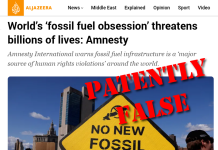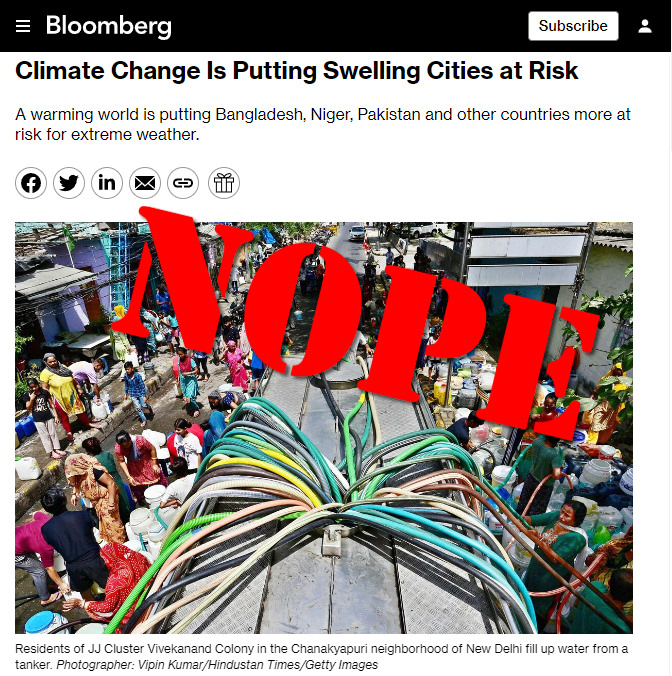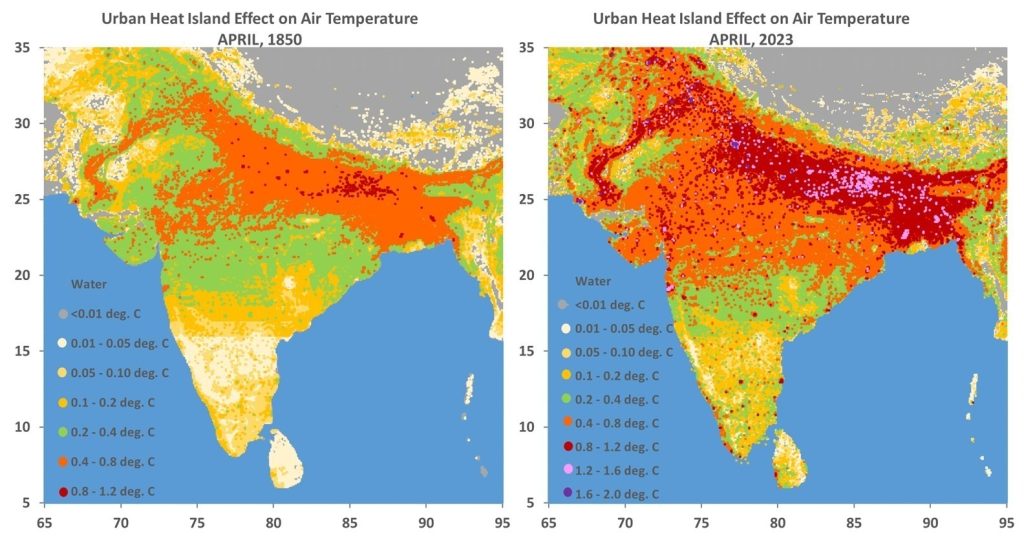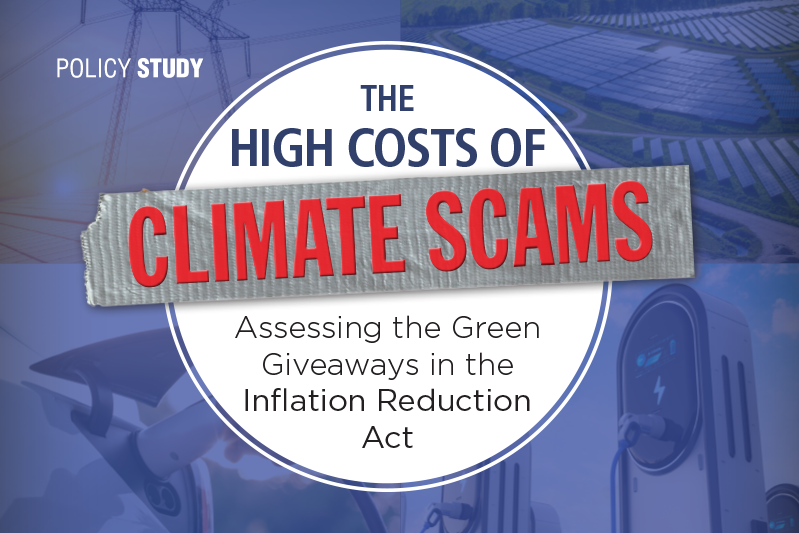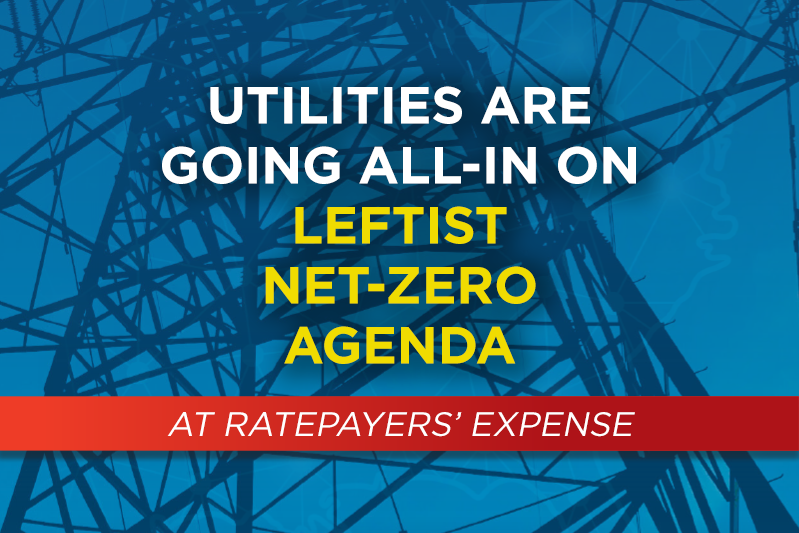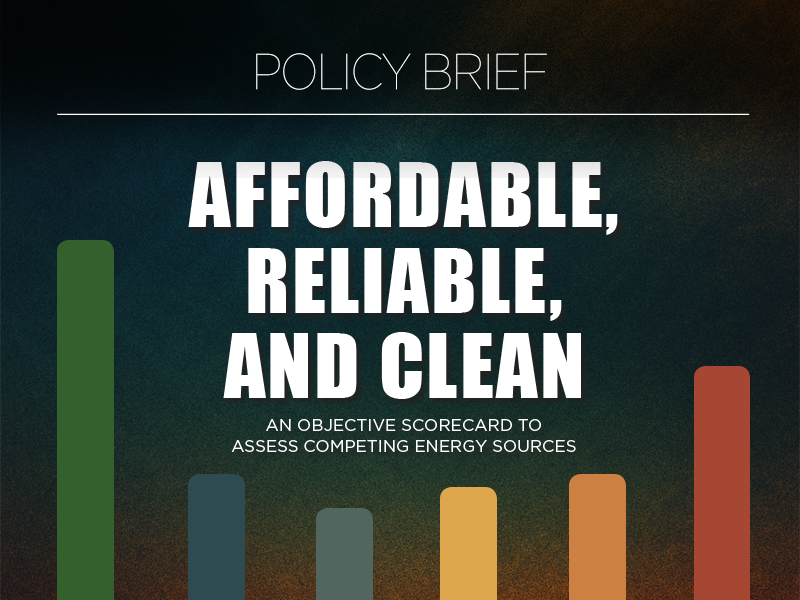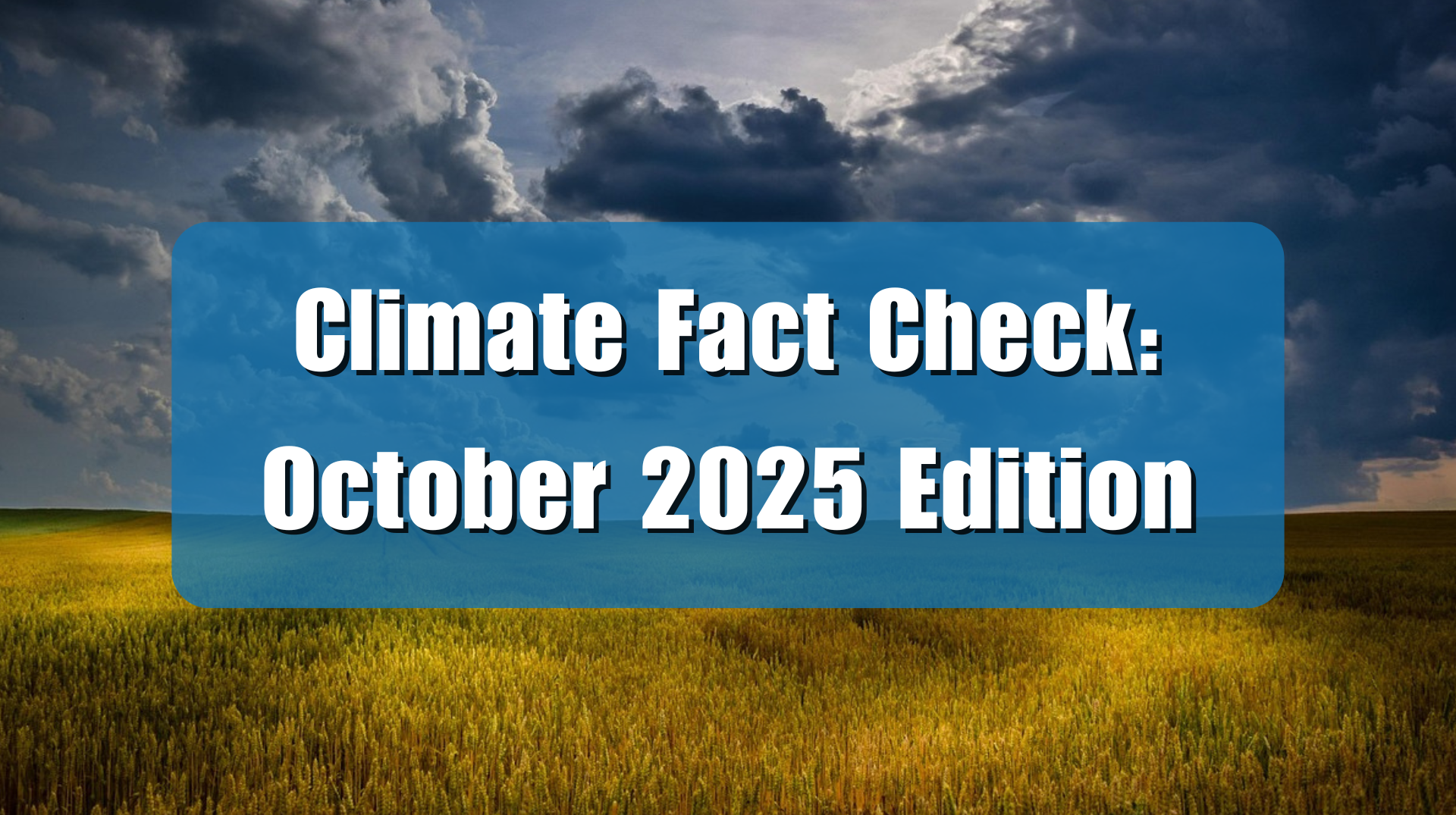An article in Bloomberg, titled “Climate Change Is Putting Swelling Cities at Risk,” with the subtitle, “A warming world is putting Bangladesh, Niger, Pakistan, and other countries more at risk for extreme weather,” makes some false claims that are refuted by real-world data and by scientific research which examines the impacts of growth and the densification of cities.
The authors, Dorothy Gambrell and Brian Kahn say this:
Weather events exacerbated by climate change will threaten many places in the coming years, and many of these locations are also projected to gain a lot of new inhabitants. In the world’s largest cities, governments will have to do more to protect the millions of people in danger from a hot planet.
The article provides a graphic, seen below, which purports to show where the urban populations are “most vulnerable to climate change.”
What is most telling is that the Bloomberg map shows clearly the at-risk urban cities that have the lowest per-capita income and lower access to inexpensive energy. It is no surprise that most of economically depressed Africa and much of Asia and India are shown to be the most “at risk.”
They go on to cite specific examples:
None of these are points are climate change related or even “extreme weather” related as Bloomberg’s headline claims, rather they are indications that these cities are experiencing resource overuse related to population growth, a form of the “Tragedy of the commons, described below:
According to the concept, should a number of people enjoy unfettered access to a finite, valuable resource such as a pasture [or water], they will tend to over-use it, and may end up destroying its value altogether. Even if some users exercised voluntary restraint, the other users would merely supplant them, the predictable result being a tragedy for all.
This is purely an issue of increased populations in a small area, not climate change. A second problem related to the increase in population and expansion of cities is called the expanded bullseye effect, which occurs when population and development increase in areas or regions prone to natural disasters, as discussed in numerous Climate Realism posts, here and here, for example.
Some of the claims, such as claims of the Mexico City drinking water issues and Jakarta sinking due to ground water withdrawal are simply laughable to blame on climate change.
The Bloomberg article references no proof that the problems are being caused by climate change – because there simply isn’t any.
The article suggests that rising temperatures in cities in Asia/India are at greatest risk. However, recent data on the Urban Heat Island effect (UHI) by climatologist Roy Spencer, Ph.D., shows that the heat in cities and suburbs, in Asia and elsewhere, like Phoenix, is a direct result of increasing populations and infrastructure boosting the UHI. In the side-by-side map below listed as Figure 1, compare the amount of UHI effect difference between April 1850 and April 2023 in India’s most populous region:
Figure 1. UHI comparison image from Roy Spencer Ph.D from his website.
Data strongly indicates that the UHI has a far greater effect than climate change itself over time.
Bloomberg’s article presents a bevy of claims about cities, heat, and extreme weather which aren’t supported by citations in the article itself. Bloomberg’s claims appear to be little more than a mishmash of talking points that the authors are trying to connect to climate change, despite data showing no increase in, for example, extreme weather events, or worsening conditions with regards to hunger or weather or temperature related illness or deaths in the areas discussed.
This sort of “junk journalism” is little more than click-bait for those who believe that climate change is a bigger and more serious issue than growing cities that are overutilizing their own resources and sweltering under their own UHI heat dome. Shame of the authors and editors at Bloomberg to allow this sort of rubbish to be published.







